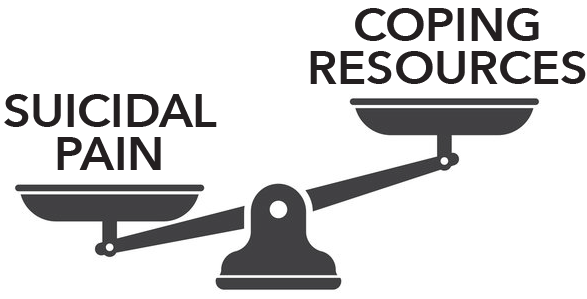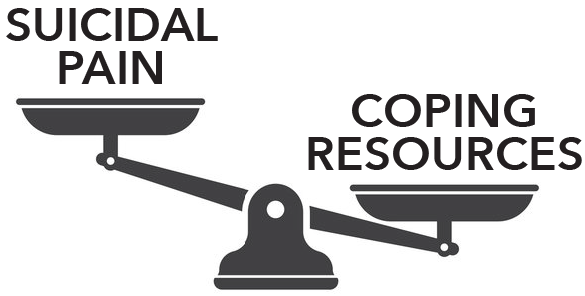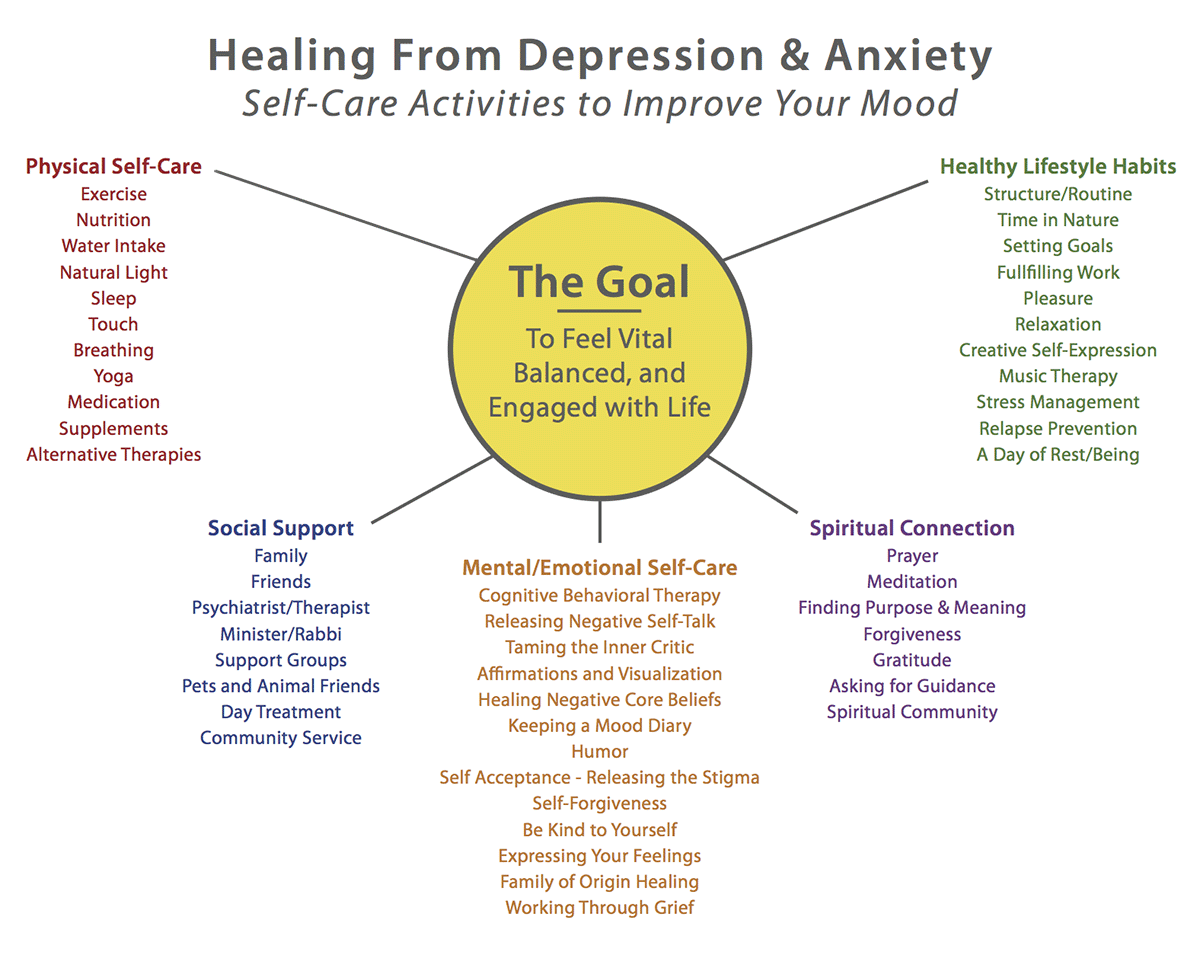The goal of suicide is the elimination of pain.
Jack Klott
Reduce the level of suffering, and the individual will choose to live.
Maurizio Pompilli, MD
When you are suicidal, you are trying to solve a problem. That problem is the unbearable pain that you are feeling. When the pain gets to a certain threshold and you lose hope that things will ever get better, you may see suicide as the only option that will put an end to your agony.
Perhaps you are feeling this way right now. That is because your pain is so intense that it is overpowering your resources to cope with that pain. This imbalance is illustrated in the image of a pair of scales below:

Suicidal Thoughts
(Image adapted from David Conroy’s book, Out of the Nightmare: Recovery From Depression And Suicidal Pain.)
The good news is that It does not take much to “tip the scales” toward hope. Just adding or one or two coping resources to the scale can shift your experience of the pain from unbearable to bearable.

Hope
The good news is that it does not take much to “tip the scales” toward hope. Just adding or one or two coping resources to the scale can shift your experience of the pain from unbearable to bearable.
A coping resource is any thought or action that lessens emotional pain and creates feelings of health and well-being.
For example:
Finding new ways of coping will help you to decrease your pain if it is arising from mental health challenges such as depression, anxiety or bipolar disorder. Applying coping resources can also reduce your pain if your suicidal thoughts are related to real-life problems such as health struggles, dealing with bankruptcy, addiction, or a family conflict.
Because there is an abundance of coping resources that you can draw upon to reduce your suicidal pain, you can feel more confident about your eventual healing. Many of these coping strategies are covered in more detail elsewhere on this site, among them making a list of reasons to stay alive, reaching out for support, and creating a safety plan.
Below is a diagram of the therapeutic self-care and pain-reducing strategies that I have shared with others over the past twenty years. It will be good for you to see the many options you can use to help yourself feel better.

Take a moment to meditate on the image of the scales with pain on one side and coping resources on the other. Next, look over the Self Care Activities diagram. Then answer these questions:

The content of this website is for educational purposes only and is not meant to replace diagnosis or treatment by a qualified mental health professional.